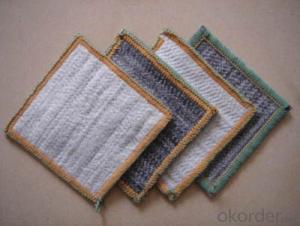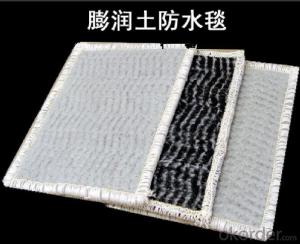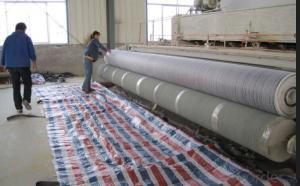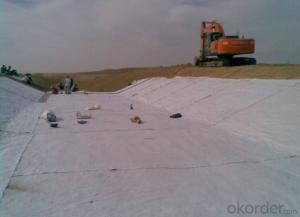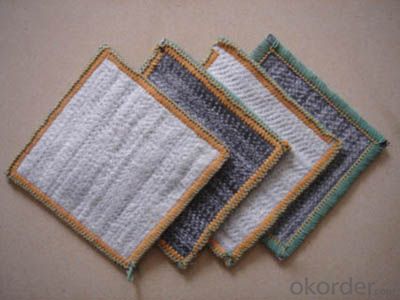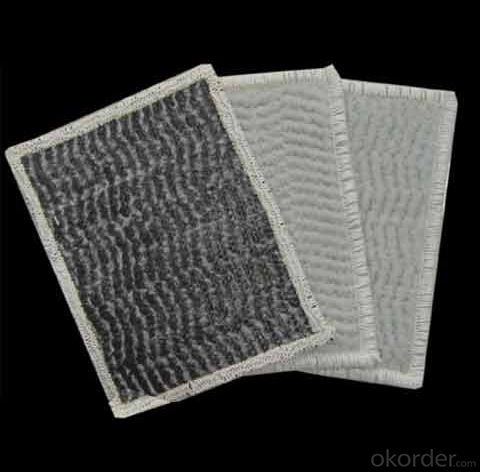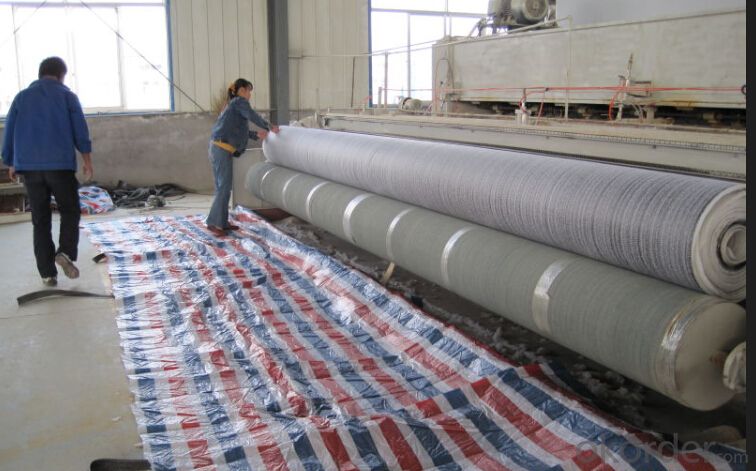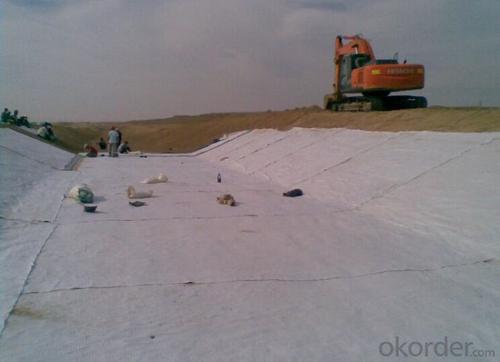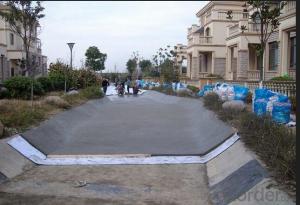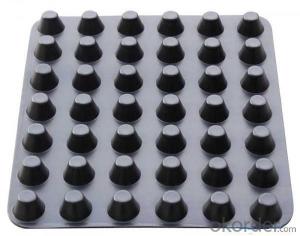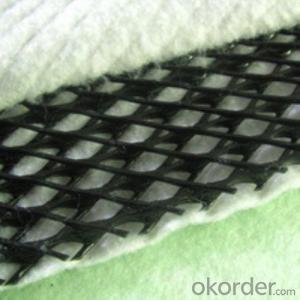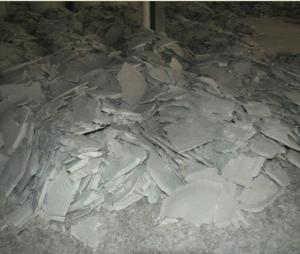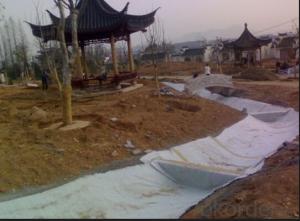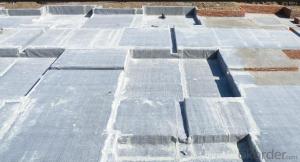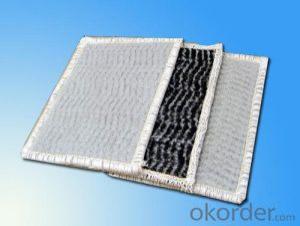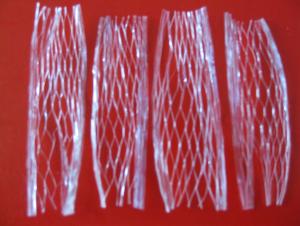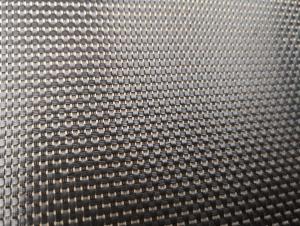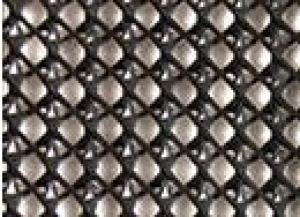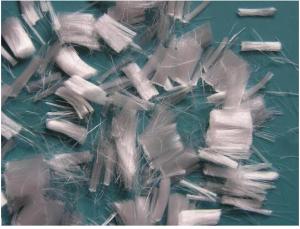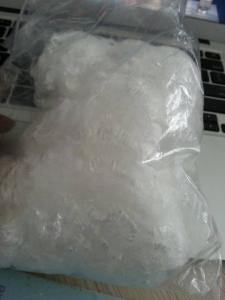Sodium Bentonite Geosynthetic Clay Liner with ASTM Standard
- Loading Port:
- Qingdao
- Payment Terms:
- TT OR LC
- Min Order Qty:
- 5000 m²
- Supply Capability:
- 100000 m²/month
OKorder Service Pledge
OKorder Financial Service
You Might Also Like
Sodium Bentonite Geosynthetic Clay Liner
Introduction of GCL:
Geosynthetic Clay Liner is manufactured
by three levels, including two levels of geotextile whose functions are protecting and strengthen to ensure shearing strength and tensile strength, inner content is Sodium bentonite clay. It is manufactured by nature layer silicate inorganic materials and has high expansibility and high water-absorbing capacity, when soak with low permeable capability, whose the main function is anti-seepage.
Description of GCL
Unit weight ≥4000gsm
width of 4-6m
Compared with clay liner ,it has the advantages of small size,light weight ,good flexibility and sea
easy for construction and suitable for uneven settlement.
GCL Feature:
1.The permanent waterproof
Because sodium base bentonite is a natural inorganic material, even after a long time or the surrounding environment changes,
also won't happen aging or corrosion phenomena, so the waterproof performance persistence.
2. Compactibility
Sodium base bentonite under water pressure condition to form diaphragm with high density, thickness of about 3 mm,
its permeability is 5 x 10-11m/SEC below, equivalent to 100 times the compactness of 30 cm thickness of clay,
have very strong since the water retention performance.
3.Not affected by temperature
In cold climates will not brittle fracture.
4.Environmental protection
Bentonite as natural inorganic material, non-toxic harmless to human body, no special effects to the environment,
have good environmental performance.
5.Simple and short time of construction
Compared to other waterproofing materials, construction is relatively simple, don't need to be heated and paste.
With bentonite powder and nails, washers, etc are connected and fixed. After construction does not need special
inspection, if it is found that the waterproof defects and easy to maintenance.
GCL is existing waterproof material in construction period of the shortest.
Specifications
| Property | National standard | Enterprise Standard | Inspection standards |
| JG/T 193-2006 | |||
| Geosynthetic Clay Expansion index | ≥24 ml/2g | ≥25ml/2g | ASTM D5890 |
| Mass Per Unit Area(g/m2) | ≥4000 g/m2 | ≥4000 gm2 | ASTM D5993 |
| Tensile Strength | ≥6KN/m | ≥8KN/m | ASTM 4632 |
| Maximum load elongation | ≥10% | ≥10% | ASTM 4632 |
| Permeability | ≤5×10-11 | ≤5×10-11 | ASTM D5084 |
| Moisture content | ≤15% | ≤15% | ASTM D4643 |
| Peel strength | ≥40N | ≥65N | ASTM D4632 |
| Hydrostatic pressure | 0.4Mp | 0.4~0.6Mp | ASTM D5891 |
Application of GCL:
Mainly used in environmental engineering or landfill emissions underground reseroirs.underground
infrastructure construction projests sealing solution ,segregation ,anti-leakage,good effect,anti-
destructive
FAQ:
How many quantity for one 20'' container?
About 5,000m2, 16rolls
What's your delivery time?
About 15-20days against deposit received
. What's your package?
Per roll with two pieces woven bag
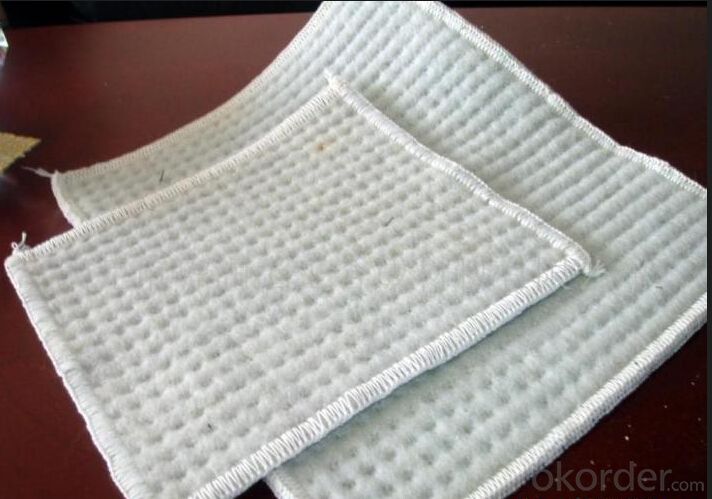
- Q: How do geotextile tubes work in dewatering and shoreline protection projects?
- Geotextile tubes are used in dewatering and shoreline protection projects by acting as containment structures. These tubes are filled with sediment-laden water or sludge and allow the water to gradually drain out through the geotextile fabric, leaving behind dewatered solids. This dewatering process helps to reduce the volume and weight of the material while also increasing the stability of the shoreline. The geotextile fabric used in these tubes acts as a filter, allowing water to pass through while retaining the solid particles. Additionally, the tubes can be stacked and placed strategically to create a barrier for shoreline protection, preventing erosion and maintaining the integrity of the shoreline.
- Q: What are the benefits of using geotextile tubes for dewatering projects?
- Geotextile tubes offer several benefits for dewatering projects. Firstly, they provide an efficient and cost-effective solution for separating solids from liquids, allowing for the removal of sediment and contaminants from water. Additionally, the tubes are easy to deploy and can be installed in various locations, making them versatile for different project sites. They also have a large capacity for holding solids, reducing the frequency of disposal and increasing overall project efficiency. Moreover, geotextile tubes are environmentally friendly as they promote the natural settling of sediments, minimizing the impact on surrounding ecosystems.
- Q: How do geocomposites aid in soil filtration in earthwork projects?
- Geocomposites aid in soil filtration in earthwork projects by providing a barrier that allows water to pass through while preventing the movement of fine particles. This helps to maintain the stability and strength of the soil, preventing erosion and enhancing the overall performance of the project.
- Q: How do geopipes help in stormwater management?
- Geopipes help in stormwater management by efficiently collecting and conveying stormwater runoff to designated areas, preventing flooding and water damage. They are designed to effectively drain and channel stormwater away from roads, parking lots, and other surfaces, reducing the risk of erosion and water accumulation. Geopipes also assist in controlling water quality by filtering out pollutants and sediments, ensuring cleaner water is discharged into the environment.
- Q: Can earthwork products be used for creating outdoor kitchens?
- Yes, earthwork products can be used for creating outdoor kitchens. Earthwork products such as bricks, stones, and concrete can be used to build the foundation, walls, and countertops of an outdoor kitchen. These materials are durable, weather-resistant, and can provide a rustic and natural aesthetic to the outdoor kitchen design. Additionally, earthwork products can be easily incorporated with other elements like wood or stainless steel to create a functional and visually appealing outdoor cooking space.
- Q: Material chemistry and civil engineering that employment prospects
- Power engineering direction of the graduates to the power plant, air conditioning production plant as technology, management, sales work. As the heat and power engineering courses are rich, graduates can also enter the power, chemical, aerospace, machinery and other industries design institute or design company, do design work.
- Q: What is the lifespan of earthwork products?
- The lifespan of earthwork products can vary depending on various factors such as the type of material used, the quality of construction, and the level of maintenance. However, with proper planning, design, and regular upkeep, earthwork products such as retaining walls, embankments, and slopes can last for several decades to even centuries.
- Q: Are earthwork products suitable for use in reservoir construction?
- Yes, earthwork products are commonly used in reservoir construction. These products, such as soil, rocks, and aggregates, are essential for building the embankments and slopes of reservoirs. They provide stability, erosion control, and help to retain water. Additionally, earthwork products can be engineered and compacted to meet the specific requirements of reservoir construction, ensuring their suitability for use in this application.
- Q: Are earthwork products suitable for use in airport construction?
- Yes, earthwork products are commonly used in airport construction. These products, such as fill materials, subgrade materials, and drainage systems, are essential for the preparation of runways, taxiways, and aprons. They provide stability and proper drainage, ensuring the structural integrity of the airport infrastructure.
- Q: What is the purpose of using geosynthetic reinforcements in tunnel construction?
- The purpose of using geosynthetic reinforcements in tunnel construction is to enhance the stability and strength of the tunnel structure. These materials, such as geotextiles or geogrids, are placed within the soil or rock surrounding the tunnel to provide additional support. They help to distribute loads, reduce the risk of ground movement, and improve the overall performance and safety of the tunnel.
Send your message to us
Sodium Bentonite Geosynthetic Clay Liner with ASTM Standard
- Loading Port:
- Qingdao
- Payment Terms:
- TT OR LC
- Min Order Qty:
- 5000 m²
- Supply Capability:
- 100000 m²/month
OKorder Service Pledge
OKorder Financial Service
Similar products
Hot products
Hot Searches
Related keywords
